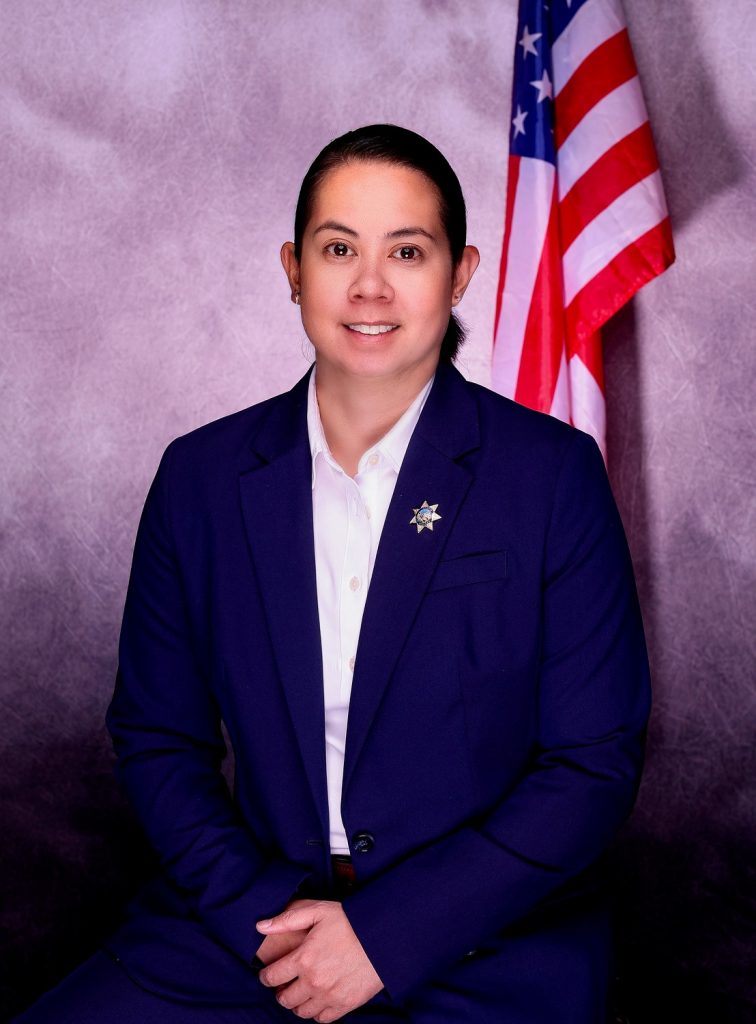For two decades, Anissa De La Cruz has helped the department achieve public safety through rehabilitation. As acting Warden of Central California Women’s Facility (CCWF) since March, De La Cruz directly oversees staff and operations.

She began her career with with the department as a correctional officer at Wasco State Prison in 2004. Four years later, she promoted to correctional sergeant at Avenal State Prison. The same year, she was awarded the Gold Star during the CDCR Medal of Valor Ceremony.
In 2012, De La Cruz promoted to correctional lieutenant at California State Prison, Corcoran.
While at Corcoran, she held several positions including Investigative Services Unit (ISU) Lieutenant, and Acting ISU Captain.
After four years in Corcoran, she promoted to correctional captain at CCWF in 2016. Just two years later, she became associate warden in 2018.
Secretary Jeff Macomber appointed De La Cruz as Chief Deputy Warden at CCWF in January 2023.
De La Cruz earned a Bachelor of Arts Degree in Psychology from California State University, Fresno.
De La Cruz is a firm believer in helping surrounding communities with charitable donations and strives to maintain a positive relationship with local Law Enforcement agencies. She is committed to creating a positive work culture that values staff input, promotes teamwork and collaboration, and provides opportunities for professional growth and development.
Her vision is to create a safe, supportive, and empowering environment for incarcerated women to grow, heal, and learn, so they may successfully reintegrate into society and lead fulfilling lives.
Meet CCWF acting Warden Anissa De La Cruz
What motivated you to become a correctional officer? What do you enjoy most about your job?
My motivation to become a correctional officer is deeply rooted in the belief in rehabilitation. I desire to make a positive impact and have a strong sense of responsibility to maintain order and safety. These all drive me to make a change within the correctional system.
What I love most about my job is the people I work with. I’ve met some great people throughout my career. I’ve had the opportunity to gain invaluable experiences and training.
What are some of the biggest challenges you face daily? How do you overcome them?
Since joining CDCR, I’ve adeptly navigated various challenges. As I assumed the role of Warden, I encountered communication gaps among staff. I promptly addressed this by initiating regular meetings and fostering open dialogue.
Additionally, I tackled the issue of low staff morale by continuing programs that recognize and reward employees’ contributions. This resulted in a more positive work environment. I focused on enhancing security measures related to the Prison Rape Elimination Act (PREA). Also, I introduced updated protocols and invested in additional Audio-Visual Surveillance equipment.
How has your role as a correctional officer evolved over the years? What changes have you seen in the corrections industry?
Throughout my years as a correctional officer, I’ve witnessed significant changes in both the role itself and the broader corrections industry. When I started, the primary focus was often on security and confinement. However, over time, there has been a notable shift towards a more rehabilitative and therapeutic approach.
One of the most significant changes has been the emphasis on rehabilitation and reintegration. Correctional officers now play a more active role in providing educational, vocational, and counseling programs to the incarcerated population. By offering educational programs, job training, and counseling services, prisons can help the incarcerated population develop the skills and knowledge necessary to lead productive lives after their release.
Submitted by Lt. Monique Williams, AA/PIO
CCWF
Learn more about the California Model on the CDCR website.
Follow CDCR on YouTube, Facebook, X (formerly Twitter). Listen to the CDCR Unlocked podcast.